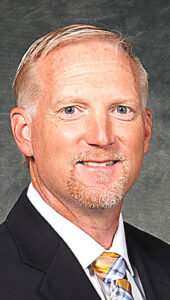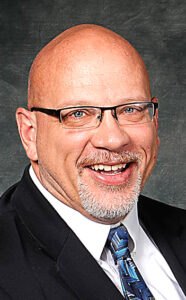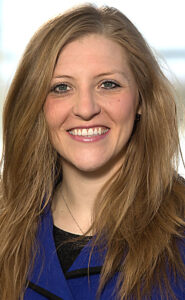49-page doc gets the nod from school board
By James Hanlon
Leader Staff Writer
Oxford Community Schools released the most in-depth details thus far of its plans for the 2020-21 school year. The Board of Education approved the schools’ COVID-19 Preparedness and Response Plan, a 49-page document prepared by the district cabinet, at a special July 28 virtual meeting.
A “parent-friendly” PDF document summarizing the plan was emailed to families. The plan includes further details about daily student life including lunch, recess and passing in hallways.
In compliance with Gov. Gretchen Whitmer’s Executive order 2020-142, every school district and nonpublic school must develop and adopt a COVID-19 preparedness plan that is informed by the Michigan Return to School Roadmap released on June 30.
“This is our plan, this is what we’ve come up with,” Supt. Tim Throne told the board. “This is what we think is best for our students and our community. We’ve received feedback from parents, students, teachers, support staff, you name it. We’ve listened and we continually listen.”
Throne said the plan is not perfect, and some of the details may change when it comes to implementation, especially since they are getting new information on a daily basis. “We believe it is our best guess today with what we know, but that doesn’t mean we will not be changing things down the road. We most likely will be.”

Families will have two options to choose from for their children this fall: return to school for regular in-person seated instruction five days a week or enroll in Oxford Virtual Academy for a 100 percent online experience.
The Preparedness Plan details the first option, in-person instruction. Returning to school however, is still contingent on which phase southeast Michigan is in the Michigan Safe Start Plan. The Detroit region has been in phase 4 since June 1.
As long as it stays in phases 4-6, the schools will continue seated instruction. However, if it dips back down to phases 1-3 due to a rise in COVID-19 cases, the schools will have to switch back to remote/distance learning.
This may involve switching back and forth between remote learning and in-person learning throughout the year. Depending on local conditions, individual classes and buildings might also have to switch to remote learning at times.
Throne wrote to parents in an email, “We value the importance of in-person instruction, and we are confident in what it offers our students in our classrooms. We hope we can provide in-person instruction as long as possible. With that being said, we are also prepared to treat each day as having the possibility to move to remote/distance learning if local health conditions change.”
Families who already know they are not comfortable returning to school in-person in the fall, or simply need day-to-day consistency, are encouraged to enroll in OVA, which will not be affected regardless of which phase MI Safe Start is in. Transfers must be made by Aug. 17.
Preparedness Plan,
MI Safe Start phases 1-3
If forced to switch to remote learning, schedules will prevent overlaps. The curriculum will continue to be taught by classroom teachers through a combination of synchronous (live) and asynchronous (pre-recorded) teacher-guided lessons, online work and independent practice. Staff will still be able to work in their classrooms, including to give remote live instruction, if they choose to.
All students, K-12 will receive a Chromebook to work with.
“We are cognizant of the fact that families may have to learn to navigate multiple platforms for multiple students in one household,” the plan states.
That’s why Ken Weaver, Deputy Superintendent of Curriculum and Instruction, says it is so important that they make it to the beginning of the school year still in phase 4. “That will be the greatest gift that we have is if we can get to the start of the school year in Phase 4, having our teachers with the kids and being able to help get them ready for what may come,” he said.

Teachers will train students and parents to access remote learning platforms from the very beginning of the school year. “We are not going to wait until we have to go remote to use the online tools,” Weaver said. “We are going to require teachers start posting their lesson plans and putting thigs out there so parents and students can get used to utilizing those sites.”
Preparedness Plan,
MI Safe Start phases 4-6
In Phase 4, all students will return to school five days a week for in-person instruction.
All students and staff will be required to wear masks at all times (on the bus, in the halls, in the classroom) except for meals and recess. This is a change from a previous version of the plan, which allowed DK-5 students to remove their masks in the classroom.
“The primary driver for this change was considering the health concerns of our staff,” Throne explained in the email. “At this time, we felt in order to protect staff, we needed to begin the year by requiring masks. Please know that we fully understand that young children may find this challenging. Please be assured that we will work with our students to teach and practice the proper wearing of masks. We will be mindful of their ages and will work to provide frequent breaks outdoors to allow students to take their masks off.”
If a student or staff member has a medical condition prohibiting them from wearing a mask, they must submit a mask exclusion form completed by a doctor. (No masks are required for students four years old or younger.)
Staff will be provided masks with an Oxford logo to make them easily identifiable for building safety, and to help create a sense of comradery and school spirit. Students will not be provided masks unless they express a need. Disposable masks will be provided for students or staff who forget their masks.
Facial coverings must be dress code compliant (no vulgar messages or drug references).
Six feet of social distancing will not always be possible. “Just sheer footage of every single classroom, I don’t think we can say, guaranteed everyone will be six feet apart at all times,” said Jill Lemond, Director of Strategic Initiatives and District Safety Operations. “But we can say with confidence, using the American Academy of Pediatrics metrics, we can space kids three to six feet apart at all times.”
Seating will be assigned, while avoiding changes as much as possible. This is important for documenting any COVID cases and tracking those in close proximity.
Outdoor spaces will be used whenever possible. Indoor assemblies will be prohibited. Signage and floor markings will promote social distancing and one-way traffic flow. Lockers will not be issued to high school or middle school students to discourage congregating in hallways.
Frequently touched surfaces including light switches, doors, benches, and bathrooms will be cleaned at least every four hours.
No parents or guests will be allowed in the buildings except under extenuating circumstances.
Staff will have to answer a health questionnaire daily, including temperature checks. Students will not have temperature checks unless they are symptomatic. Parents are asked to check their child’s temperature daily at home. Students with symptoms or a temperature of 100.4 or greater are asked to stay home. Families will be asked to sign a Return to Learn Pledge to promote at-home health screening.
The attendance policy, which incentivized good attendance, was suspended in the spring. Throne said they will not be reinstating the policy. “We have to be really clear with our parents and students – and our employees – if you’re not feeling well, don’t come to school,” he said.
Only those that develop symptoms require testing for COVID-19. Families will be notified of any laboratory positive or clinically diagnosed cases of COVID-19 in the classroom and/or school to encourage closer observation for any symptoms at home.
Beyond that, the schools will follow the Oakland County Health Department guidelines on responding to positive tests once those guidelines are released.

“We don’t have a lot of flexibility in how we handle that,” Lemond said. “We’ll have to do what we’re told by the county health department.”
For athletics, there will be no indoor spectator events with more than 50 people. There will be no outdoor events with more than 100 people.
All extracurricular activities and clubs are suspended from the beginning of the year.
“For just getting the school year started, we felt there was a lot to do and we wanted to make sure that was safe and secure as possible, so extracurricular activities will be suspended until we feel like we are able to bring those up to the same safety standards,” Weaver said.
Elementary school lunches will be eaten in classrooms. OMS and OHS will stagger lunch times and use gym areas, cafeterias, media centers, and other spaces to ensure six feet between students.
Recess will be held outdoors. They hope to assign each class a different part of the playground to prevent mixing with other classes.
Distancing will not be possible on buses, but mask-wearing will be strictly enforced. Each bus will have a supply of disposable masks for students that forget. Seating will be assigned to enable contact tracing if needed.
If the MI Safe Start status shifts to phase 5, “stringent safety precautions” will be maintained, but protocols might be modified or lessened based on state and local health conditions.
Phase 6 is post-pandemic and community spread is not expected to return.
The first day of school is Aug. 31.

The district has put a lot of hard work into this plan but it is clear from other districts across the country that what seems reasonable on paper isn’t necessarily workable when implemented. Due to time constraints at the last board meeting the “what-if” scenarios could not be addressed but it is those scenarios that I see presenting real issues moving forward.
Other SE Michigan districts — Rochester just today announced it would begin the year with remote learning instead of it’s previous plan of a 5-day-a-week in-person model – are opting to start the year remotely. Bloomfield and Berkley have opted for that, too. I’d rather see our district take the time to train teachers and staff to successfully work within a remote setting rather than have to backtrack later and play catch-up.